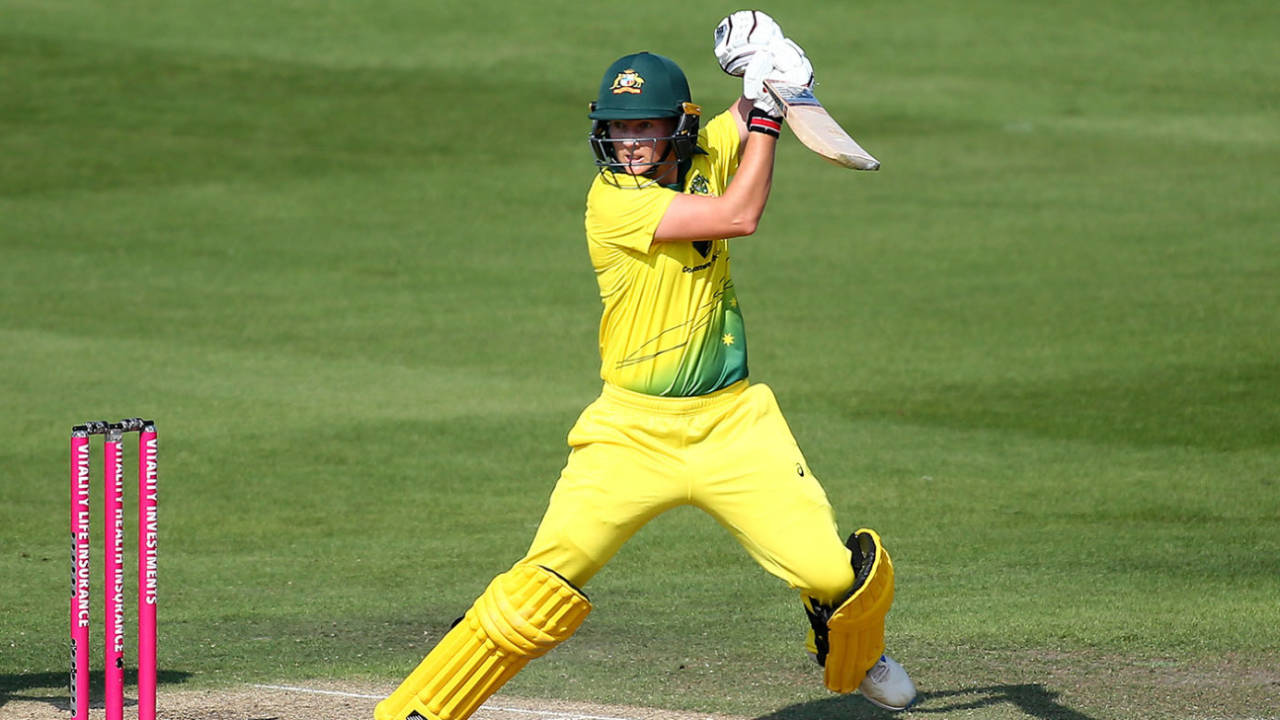The cut: Meg Lanning
It's all in the Australia captain's wrists
Shashank Kishore
25-Feb-2022
Meg goes to leg: backing away lays the foundation for Lanning's cut • Getty Images
The Hawthorn Hockey Club in downtown Melbourne is home to a player they fondly call "Mega". Her hand-eye, they say, is second to none. If she'd decided to remain committed to the sport, she would by all means have had an illustrious career. For the better part of her early adult life, Lanning relentlessly pursued both sports, but she eventually let the stick go.
Batting on Astroturf, where the ball skids through and bounces higher, helped her hone the shot she has grown to master. Today, her cut is as revered as Kumar Sangakkara's cover drive, Ricky Ponting's pull or Sachin Tendulkar's straight drive.
Go back to her magical 152 not out against Sri Lanka at the 2017 World Cup to understand her genius. Having posted 257 on the back of a magnificent 178 not out by Chamari Athapaththu, Sri Lanka decided that taking pace off the ball against Lanning was the way to go. It didn't work.
Backing away to the leg side is Lanning's base. If the bowler dropped short on the stumps, she scythed it between point and short third. If it was short around fifth stump, she slapped disdainfully through cover point. If they went full, she carved it backward of point. Against the fast bowlers, on one occasion, she beat deep point to the fence. When in full flow, Lanning doesn't have a hitting arc; she can hit you anywhere.
It isn't based on premeditation but rather is a mix of hand-eye coordination, strong wrists, and the belief that she can access different areas for similar kinds of deliveries by playing orthodox strokes. That's enough pressure for a bowler to contend with.
Snehal Pradhan, the former India fast bowler and now a broadcaster and BCCI-certified coach, says Lanning's cut shot is powered by the fact that she needs very little width to be able to access the stroke. "She isn't one of those players who has a big back-and-across movement. She stays more or less on leg and middle stump, which allows her some natural room even if you're bowling a fifth- or sixth-stump line. And because she can play it off both front and back foot, the length doesn't matter. As soon as you give her the line, she has got you. Lanning gets onto the front foot a lot more instinctively. She plays a lot of the cuts almost off the front foot, which is a very Australian style of cutting and pulling."
We at ESPNcricinfo thought long and hard about which others in the modern game come close to Lanning. The conclusion was that Sophie Devine and Smriti Mandhana are equally adept at the cut shot, but Lanning's precision and her ability to pick gaps one would believe are impossible to thread proved the clinchers. Her ability to judge lengths quicker and the split-second transfer of weight back to get on her toes help her gain control over the shot better than others.
"Often when they try to put two, three or even four fielders there, I see it as a challenge than a deterrent, which is probably to my detriment sometimes, because I keep getting fielded." Lanning said of her trademark stroke. "Even when I don't try to hit it to point, it tends to go to point anyway. It must be something to do with my wrists and quick hands; it gets through the ball."
Hockey experts speak of the importance of supple wrists in ball control and possession. How much did her playing that game growing up potentially help with Lanning's cricket wristwork? Pradhan offers a bit of coaching perspective: "Let's take the example of a side-arm throw. It's all about manipulation of the wrist to get the direction of the ball and length correct. There is a similar comparison to be made with the cut shot because the bat is extending out of your hand just the way a side-arm extends from your hand. And everything depends on the wrist position and the point of contact, and in the case of side-arm the point of release, to determine which direction the ball is going to go."
For Lanning, it's mostly a case of letting her instincts take over. And it's a shot we will perhaps see a lot more of come March and April in the Women's World Cup.
Shashank Kishore is a senior sub-editor at ESPNcricinfo
